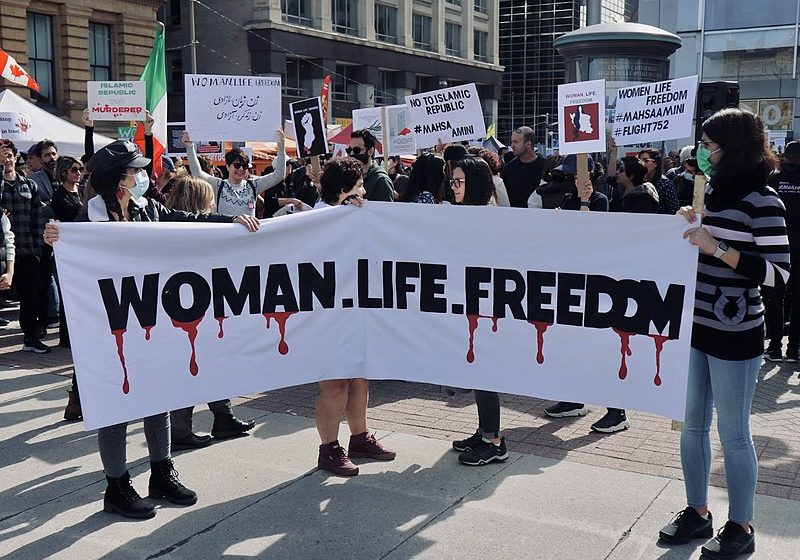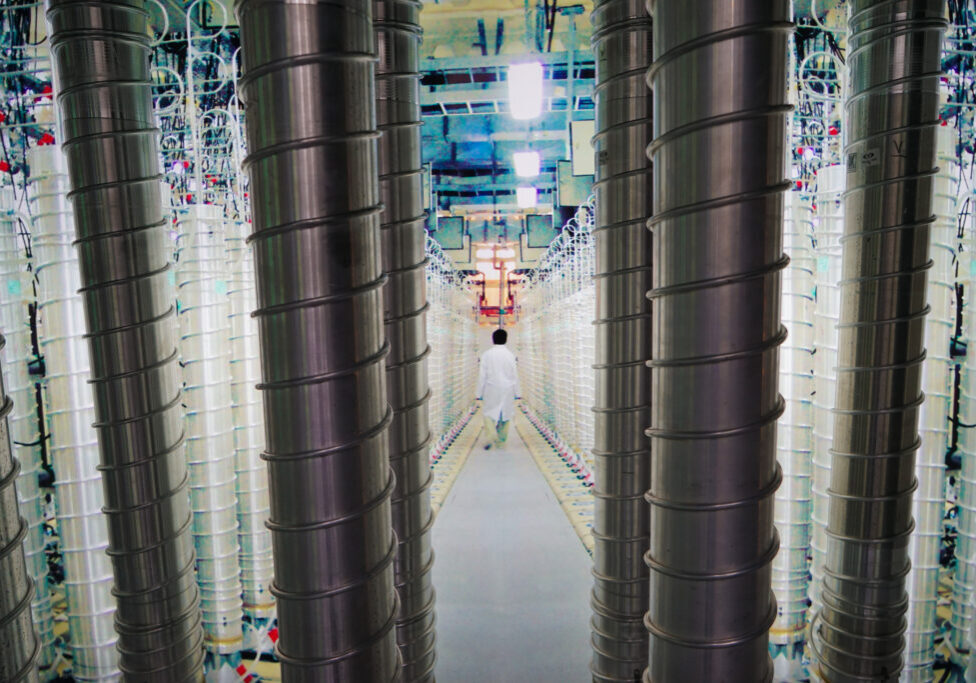Australia/Israel Review
Iran’s “breakout” potential and the US election
Oct 28, 2020 | Yossi Kuperwasser

Iran keeps seeking ways to secure the capability to produce a sufficient quantity of enriched uranium (SQ) for two nuclear devices within a short time, in defiance of growing American economic pressure. Today, Iran needs about three months to secure 1SQ, compared to a year that the 2015 Joint Comprehensive Plan of Action (JCPOA) was supposed to provide. On the other hand, the Iranians’ guaranteed and “safe” pathway to having the capability to produce a large arsenal of nuclear weapons in 10 years, as detailed in the JCPOA, has been severely disrupted.
The embargo on arms sales to and from Iran that was included in the JCPOA expired on Oct. 18, 2020, in the view of the participants of the Iran deal. The United States disagrees, insisting that all UN sanctions on Iran were reimposed on Sept. 20, 2020, due to its “snapback” application to the UN Security Council. At the same time, the US Administration also introduced unprecedentedly harsh economic sanctions on Iran, but the Islamist regime keeps moving forward with its nuclear program and blatantly violates all its commitments under the JCPOA, despite the growing economic hardships and other setbacks it has suffered.
Following the explosion at the advanced centrifuge production and assembly facility at the Natanz nuclear enrichment site on July 2 2020, on Sept. 8 2020 Ali Akbar Salehi, the chairman of the Atomic Energy Organisation of Iran (AEOI), announced that Iran had begun constructing a new facility for the same purpose in the mountains near the Natanz enrichment site. However, unlike the Natanz facility that was hit by a mysterious explosion and was built on the surface, the new facility is underground. Meanwhile, the AEOI’s spokesman reiterated that Iran had managed to unravel most of the details related to the mysterious explosion.
Following the construction of the new facility, the Iranians might try to expedite the production of the advanced centrifuges.
The International Atomic Energy Agency’s (IAEA’s) periodic report published in September 2020 did not include any reference to the explosion at Natanz or to Iran’s intention to build a new facility for the production and assembly of advanced centrifuges. As a general rule, Iran is obliged to notify the Agency in advance about the establishment of nuclear facilities and allow the Agency’s inspectors access to all enrichment-related facilities at its nuclear sites. Still, by implication, it does not do so when it comes to centrifuge production (this is one of the many holes in the JCPOA).
However, news reports in August 2020 based on a restricted IAEA document extensively describe Iran’s activities in experimenting with and developing advanced centrifuges of various types for uranium enrichment. (A summary of that report was included in the Agency’s Sept. 2 2020 periodic report on Iran.)
One news account refers to Iran’s intention to install, for the first time, advanced centrifuges that are now operating in the Pilot Fuel Enrichment Plant (PFEP) in Natanz, in the underground enrichment Hall B. According to the report, this step was supposed to have been carried out but was postponed at the last minute. In any case, the preparations for assembling cascades of advanced centrifuges at the site are already in progress.

The Natanz enrichment facilities, photographed in September 2019 (Google Earth). Annotations were added by the Institute for Science and International Security on July 3, 2020
It should be emphasised that such a development would be another significant violation of the nuclear agreement, which allows the Iranians to operate only 5,060 basic centrifuges for enriching uranium at Natanz. It is not clear if the delay is related to the damage to the facility for centrifuge assembly.
At the pilot Fuel Enrichment Plant, Iran is enriching uranium in advanced experimental centrifuges, developing a wide variety of advanced centrifuges, and violating the timetable for R&D that is included in the JCPOA.
The Iranians are also violating their obligations by enriching uranium with 1,044 centrifuges in the deep underground Fordow facility near Qom. Defiantly, Salehi declared on Sept. 13 2020 that his organisation “activated an enrichment wing in the Fordow nuclear facility.”
The use of these 1,044 centrifuges at the Fordow plant for enriching uranium was in line with steps to reduce its commitments [emphasis added] to the nuclear deal, according to Salehi. “We had promised not to enrich using these 1,044 centrifuges, but according to the reduction of commitments, enrichment will be done as needed, and we will also store the enriched materials.”
It should be pointed out that in the last year Iran has been enriching uranium to the level of 4.5% instead of the 3.67% allowed by the 2015 nuclear agreement. Iran has already accumulated an amount of uranium enriched to that level ten times greater than what it is permitted according to the agreement (about 2,100 kg instead of the 202 kg that is allowed).
It is clear that Iran is determined to continue rapidly expanding its capacity to produce nuclear weapons in a short period. The amount of enriched uranium in its possession and its current enrichment capacity would already allow it, if it wished, to enrich the uranium to a military level and produce fissile material for two nuclear explosive devices.
While an amount sufficient for the first nuclear explosive device could be produced in a little more than three months, within a further two months Iran could have the quantity required to produce a second explosive device. Installing the advanced centrifuges at the enrichment site could shorten by a few weeks the time required for military-level enrichment. (Under the JCPOA agreement, Iran was supposed to be a year away from obtaining sufficient fissile material for one explosive device.)
All this is happening as Iran continues to develop long-range missiles that will allow it to launch nuclear weapons not only against Israel but also against targets in Europe. At the same time, Europe, China and Russia ignore US attempts to renew international sanctions against Iran. They are determined to allow the Iranian regime to continue violating the nuclear deal.
It is, therefore, no wonder that as the US Election Day approaches, tensions between Washington and Teheran increase, with implications for Israel’s security.
Three Worrisome Statements
Three recent expressions regarding Iran’s nuclear program deserve clarification and context:
First, Rafael Grossi, the Director-General of the IAEA, declared in an interview with the Austrian newspaper Die Presse that Iran does not presently have the quantity of enriched uranium needed to produce a nuclear bomb. This is true and untrue at the same time. The truth is that it is about three months away from having this amount if it decides to produce it. Grossi admitted that Iran is accumulating uranium enriched to a higher level than what it committed to but avoided the question of the time required for having 1SQ by claiming the IAEA does not deal with breakout scenarios.
Second, Brigadier General Dror Shalom, the outgoing head of the IDF Military Intelligence Directorate’s Research Division, said in an interview with Yediot Ahronot that Iran needs about two years to produce a nuclear bomb from the day it decides to do so. This may be a bit misleading as the critical part of this period is the enrichment of the low-enriched uranium into high-enriched uranium, and, as noted above, this requires about three months. Since Iran has already acquired considerable know-how to weaponise enriched uranium (as seen in the captured Iran nuclear archives) and has already made significant progress in producing delivery systems, it is hard to assess how long the other stages are going to take.
Third, Shalom and others also refer to the post-American election possibilities and claim that there is not much difference between the two presidential candidates as both are interested in reaching an agreement with Iran regarding its nuclear program. In fact, there is a considerable difference. Republican Trump seeks a deal based on Iran’s readiness to accept his demands to give up the nuclear project and its regional hegemony aspirations, whereas Democrat Biden looks for a formula that will bring Iran back to a slightly improved version of the JCPOA and enable it to keep promoting its regional policy.
By now, the entire context in which the struggle over the future of the Iran nuclear program is conducted has changed.
The JCPOA has put the focus on the questions of whether Iran is going to have a big arsenal of nuclear weapons by 2030 and whether the parties to the JCPOA are comfortable in the way the acquisition of this arsenal is going to come about. After the withdrawal of the United States from the deal, the question became again, as it was until 2015, whether Iran will have enough fissile material for one or two nuclear devices, and how it is going to overcome the threshold that separates it from reaching this goal under economic pressure and military threats.
This has been the case since President Trump withdrew from the JCPOA. Iran and everybody else, including Israel, are waiting anxiously to see what the US elections portend.






